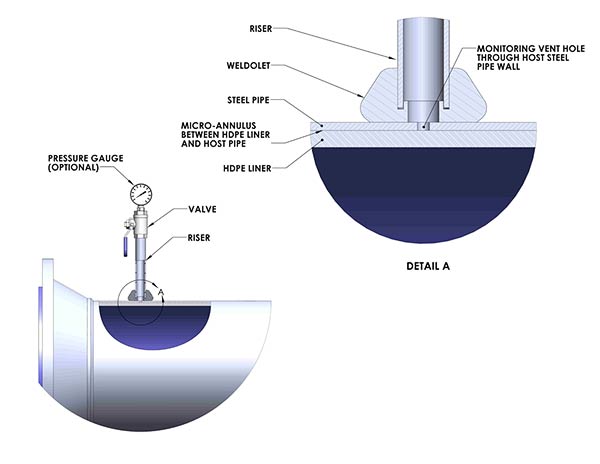Download the NBS Pipeline HDPE Lining Brochure
NBS provides the highest quality polyethylene pipe lining systems for superior protection against internal pipeline corrosion and abrasion. If you have any question about the HDPE installation process or to find out if HDPE lining is suitable for your particular project, please contact us at info@hdpelining.com
HDPE Lining Basic Installation Steps
Basic Steps:
Step 1. The host steel pipeline is subdivided into appropriate pull section lengths for HDPE liner insertion.
Step 2. On the job site, shorter lengths of HDPE liner are thermally fused together, creating longer monolithic lengths to match the steel pipe segments.
Step 3. A cable or Kevlar rope with a sizing plate and blow-down pig is sent through a steel pipeline section.
Step 4. At the opposite end of the steel pipe pull section, the cable is attached to a pull-head on the matching HDPE liner.
Step 5. The HDPE liner is pulled through a roller reduction box prior to entering the steel host pipe. The radial compression of the HDPE liner allows it to temporarily fit within the inner diameter of the steel pipe. This reduction in the HDPE liner’s outer diameter is maintained due to axial tension during the pulling process.
Step 6. Once the HDPE liner has been pulled completely through the host pipe, the tension is released and the HDPE expands, allowing the liner to form a “friction fit” against the steel.
Step 7. Specially machined HDPE flange “stub-ends” are used to iso- late the lined segments. Steel compression rings are utilized to ensure a leak-free connection between the HDPE gasketed steel flanges.
Step 8. The lined segment is thoroughly tested prior to bolting up the steel flanges at which point the pipeline is ready to be placed back in service.
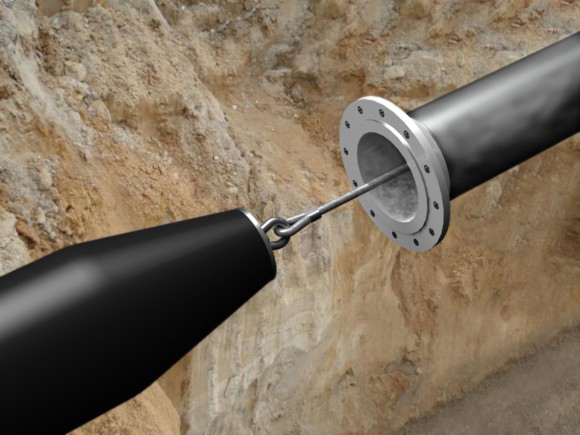
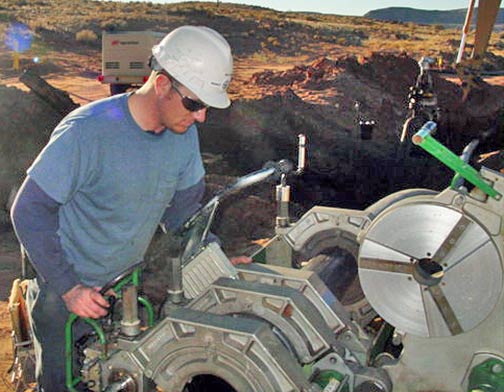
HDPE Lining Specification
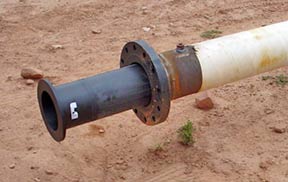
HDPE Lining Flange Connection
HDPE lined flange connections have been successfully used in leak-free service on thousands of projects and at pressures above 5,000 psi.
Specially machined HDPE flange “stub-ends” are used to isolate the lined pipe segments. Steel compression rings are utilized to ensure a leak-free connection between the HDPE gasketed steel flanges.
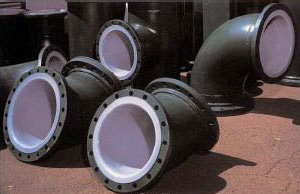
HDPE Lined Fittings
High-density polyethylene (HDPE) is factory applied and bonded to the inside of all project elbows, tees, and other fittings according to NBS' exacting specifications, in order to produce a tight and correct seal for all pipe connections.
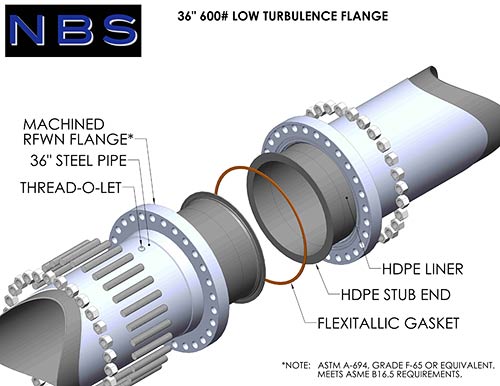
HDPE Lining Abrasion Resistant Flange Connection
Providing smooth flow across the pipe joint connection, the NBS abrasion resistant low turbulence flange eliminates undue wear of the HDPE lining due to abrasive particulate turbulence.
HDPE Pipe Lining Monitoring System
